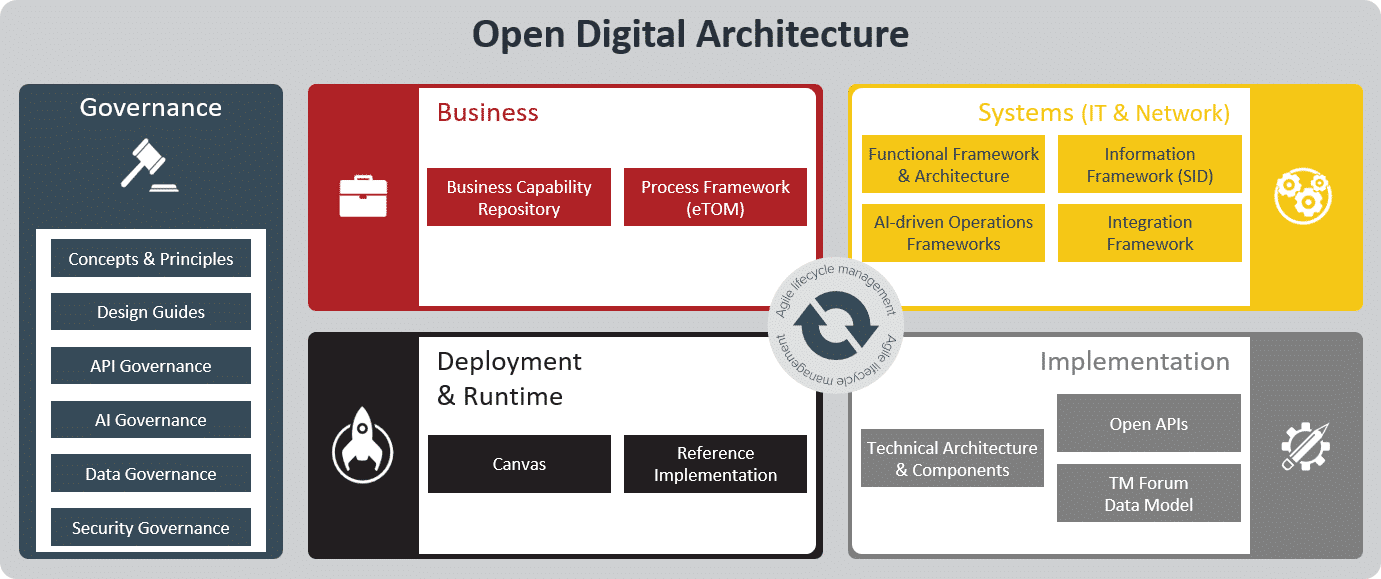Network Transformation: TM Forum's Open API & Open Digital Architecture (ODA)
Majority global operators have been on the journey towards network transformation / cloudification for only 4-5 yrs now and due to challenges and complexities involved with network virtualization and cloudification, relatively very less progress has been made. However the speed of transformation has caught pace globally in the last 2 yrs as most operators plan for implementing 5G in their networks.
In order to ease the transition , many open source projects and industry associations have got created over the years with goal of easing virtualization journey for vendors & operators. One such industry association who has been leading the efforts for Digital Business Transformation has been TM Forum. 2 initiatives of TM Forum to ease network transformation include OpenAPIs & Open Digital Architecture(ODA).
OpenAPIs:
The OpenAPIs initiative started in 2016 and involved collaboratively developing Rest APIs that can be used for scenarios to enabling service providers to transform their IT systems, improve operational
agility and focussed at customer centricity, while externally delivering a practical
approach to seamless end-to-end management of complex digital services. More than 50 OpenAPIs have been created and full list can be viewed at URL.
The APIs are in use by more than 7,000 software developers in over 1,200 companies worldwide. T Some of the companies using the Open
APIs include AT&T, Deutsche Telekom, Axiata, Bharti Airtel, BT, China Mobile, China Unicom,
Ericsson, Nokia, Globe, Huawei, IBM, MyRepublic, NTT-Group, Oracle, Orange,
Telefonica, Telstra and Vodafone. Full List of signatories to the OpenAPI can be viewed here.
Open Digital Architecture:
In 2018, TM Forum launched Open Digital Architecture(ODA). ODA is a blueprint for modular, cloud-based and open digital platforms that can be orchestrated using AI.
Open Digital Architecture aims to create a market for innovative, standardized and interoperable software components by:
- Replacing traditional operational and business support systems (OSS/BSS) systems with cloud-native software components.
- Replacing traditional IT architectures with the Open Digital Architecture’s standardized plug-and-play components, data model and Open APIs.

The key principles of the Open Digital Architecture are outlined in the whitepaper from TM Forum.
As of June 2020, 30 companies have signed up for the Open API & ODA manifesto which includes: Amdocs, Netcracker Technologies, Nokia, Oracle Communications, BT, Deutsche Telekom, Telefonica, Telenor, Vodafone,Orange & Axiata.
With increasing traction of Cloud native network components, need for Open systems & improving Digital Experience for Customers Open API & Open Digital Architecture are definitely looking very promising.
Disclaimer:
The details presented above is based on data available online on tmforum website. Some of the Links have been embedded as URLs in the above post.
Comments
Post a Comment